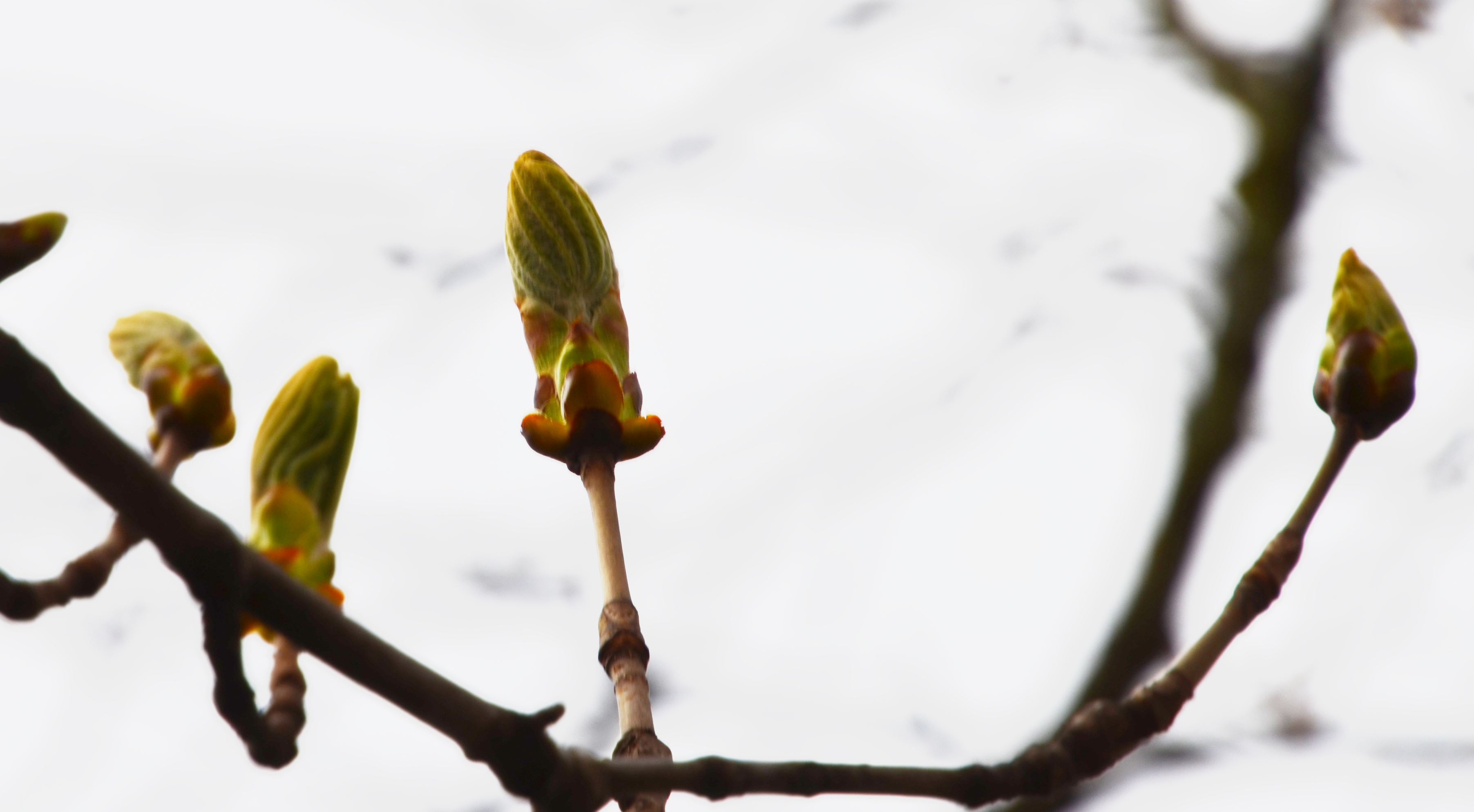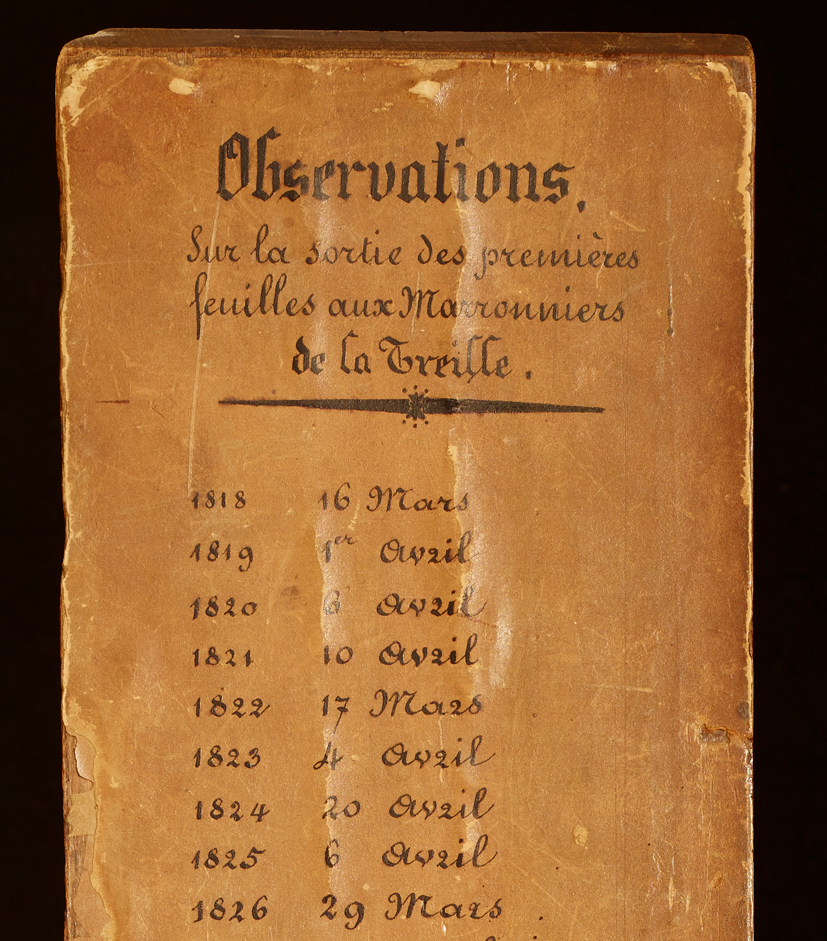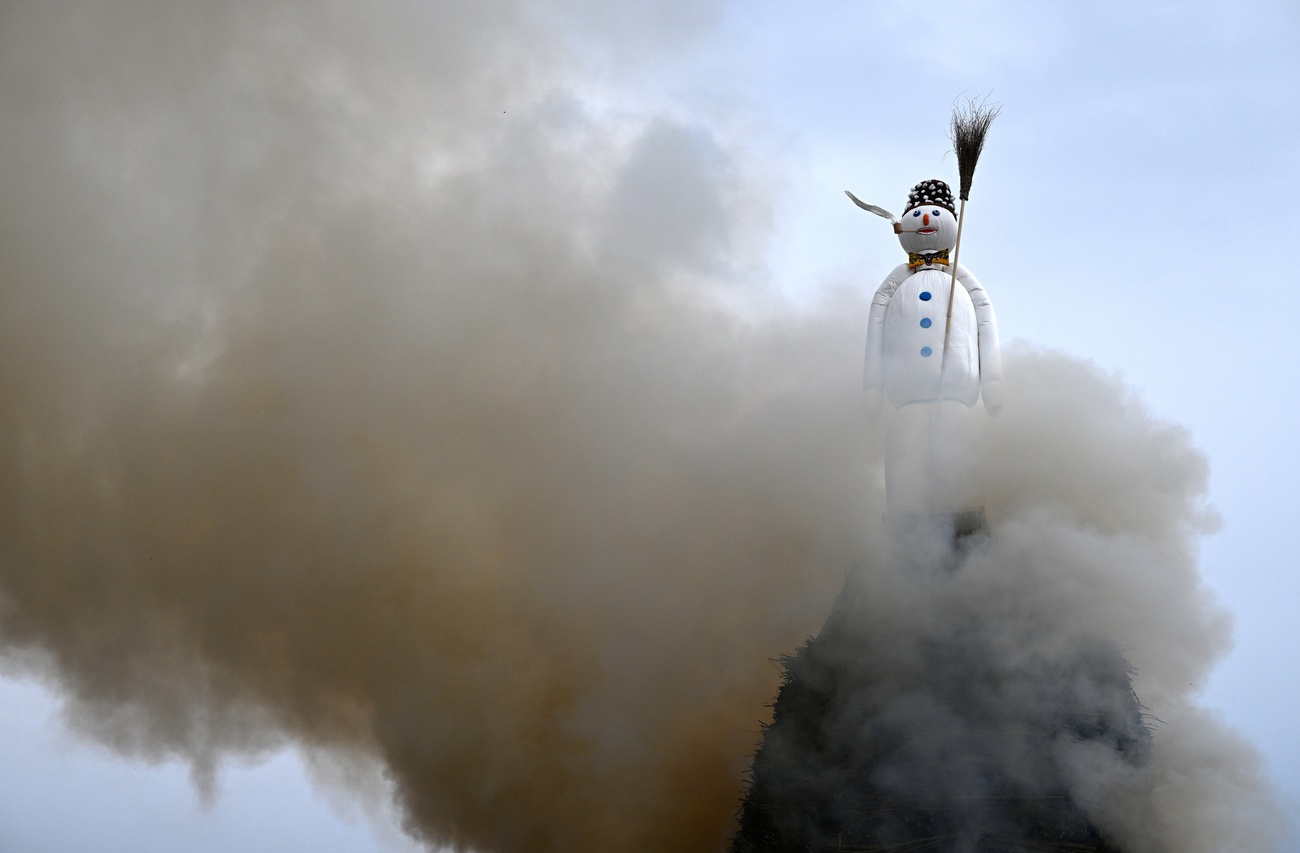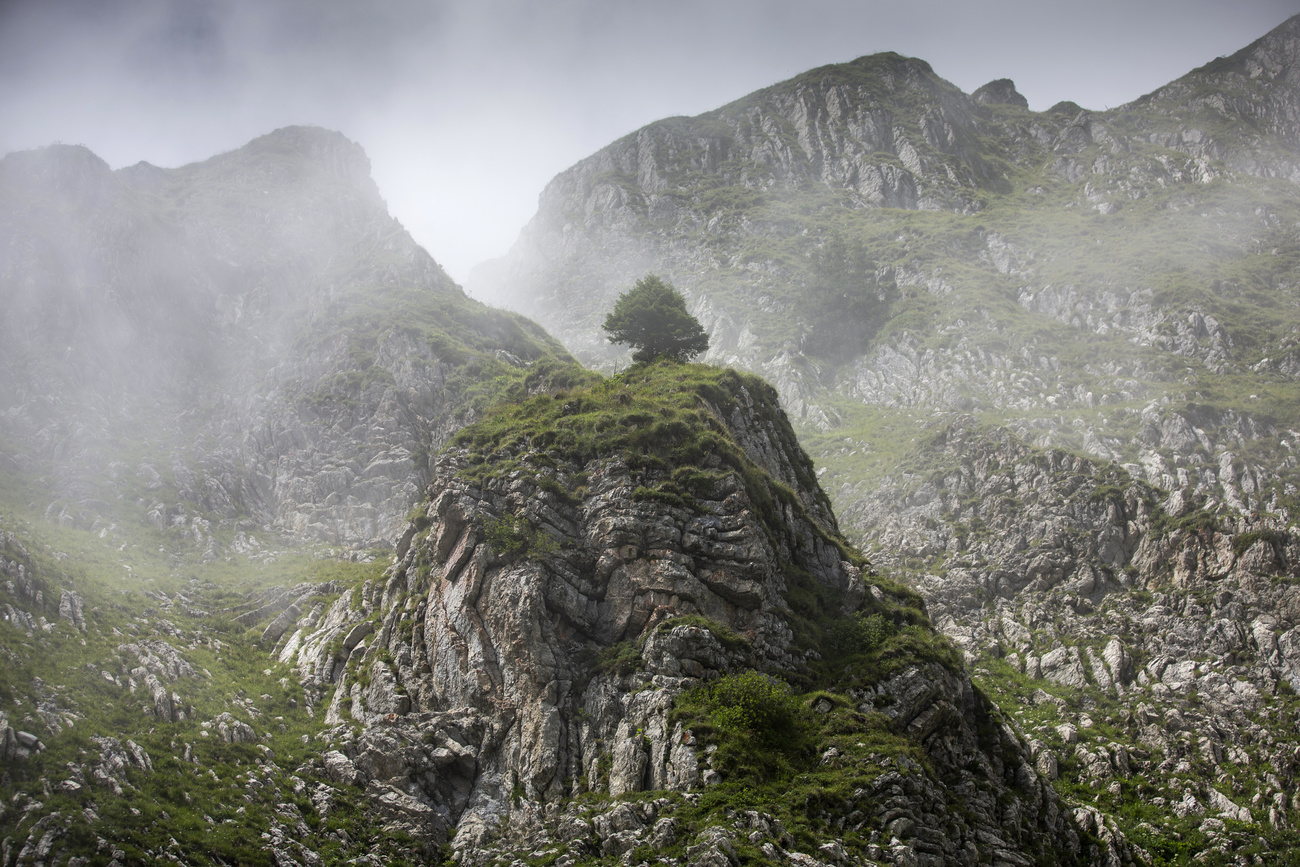Spring begins in Geneva when the official horse chestnut tree says so

Botany has deep roots in the Swiss city of Geneva and remains alive today through an unusual tradition: the observation of the opening of the first leaf of the official Geneva chestnut tree by the “sautier”, the secretary general of the cantonal parliament.
Geneva is a place of science. Not only for quantum physics, with CERN, but also for botany – what local lad Jean-Jacques Rousseau called the “salutary science” (science aimable). In the philosopher’s time, botany was the thing to do in high society.
Geneva botanyExternal link is considered one of the national living traditions, whose origins date back to the 18th and 19th centuries, when this corner of Switzerland was imbued with a naturalist spirit. Prominent figures in this trend include Rousseau (who, despite being remembered above all for the mark he left on political philosophy, had an enormous passion for herbalism) and Augustin-Pyramus de Candolle, who helped create the city’s botanical garden and conservatory (in 1817 and 1824 respectively), still among the most important institutions of their kind internationally.
Geneva is also a proud city. This can be seen, for example, during the ÉscaladeExternal link, when, according to tradition, the oldest and youngest person present smash a chocolate pot with their fists, exclaiming: “Thus perish the enemies of the Republic!”, recalling when the troops of the Duke of Savoy were repelled in 1602.
No wonder, then, if Geneva wants to stand out. Here, spring doesn’t begin on March 20 or 21, but when the Republic of Geneva’s official “marronier”, a horse chestnut tree that stands along the Treille promenade, in front of the cantonal government and parliament, says it does.
Spring has sprung
“We are sure that [the plant world is] a silent world, lacking the ability to communicate and, instead, plants are great communicators,” writes Stefano Mancuso in his book L’incredibile viaggio delle piante. The Italian botanist and essayist would undoubtedly be pleased to know that Geneva has a person whose job is, among other things, to act as an interpreter between plants and humans.
This is the “sautier” of the Republic, a role going back to 1483. Originally the sautier was a kind of forest guard who had to make sure that people got their timber supplies without going on raids. He – and it was always a he until 1996 – later became in charge of the city guards. Today, the function of sautier coincides with that of secretary general of the cantonal parliament.
The sautier prepares the sessions of parliament, sets the agenda, records the decisions taken, ensures the smooth running of the parliamentary commissions and … keeps a close eye on a horse chestnut tree.
“Tradition requires the sautier to watch the official horse chestnut tree of Geneva to determine the blossoming of its first leaf, which heralds the beginning of spring,” explains the website of the cantonal parliament.
“When I talk about my function with people, they know very little about my daily work, but they know that it is I who, in quotes, ‘announce spring’,” says the current sautier, Laurent Koelliker, who made his first official chestnut observation in 2017.
Tricks of the trade
Koelliker performs his duty thoroughly and professionally. He says that when the weather gets less harsh, usually in February, “I go to the site and observe”.
“There are two elements that help me,” he says. “When the temperature is high enough to allow the sap to flow back into the trunk and branches, you can see that the shoots begin to receive it – they become shiny and glisten in the sun. This is a sign that the tree is starting its annual cycle again and that, in the following days, the tips of the shoots will turn green.”
From that moment, it’s at least ten days before the first leaf appears.
The second element that gives Koelliker a heads-up is another horse chestnut, not far from the official one, of a different variety which was planted in 1968 by a gardener from Geneva. It has the nickname “marronier fou” – the mad horse chestnut – and has the advantage of blossoming three weeks earlier than the others.
These are tricks that Koelliker learnt from his predecessor, Maria Anna Hutter, who in turn sought the advice of the botanical garden staff on how best to carry out the observation.
“I’m also being accompanied by my deputy, as the idea is to use the same criteria and ensure a certain continuity in the quality of the observations,” Koelliker says.

Effects of climate change
Continuity is a key word here. Since 1818 without exception, the date of the unfurling of the first leaf has been noted by the sautier on a parchment – the same parchment used today and on which there is still room for a few years.
Since then, there have been 15 sautiers and four official horse chestnut trees. When one of these trees nears the end of its life and its annual cycle begins to be irregular, the sautier designates another nearby tree with similar characteristics. The current marronier has been “in office” since 2016.
It’s unlikely that the first observer, Théodore-Marc Paul, ever imagined that the tradition he launched in 1818 would prove to be a useful tool for studying the effects of climate change and urbanisation. The opening of the first leaf has in fact slowly shifted from April to February, with a few notable exceptions. In 2003, spring sprang in Geneva on December 29!
“This is one of the rare botanical observations that still exist today and span more than two centuries,” Koelliker says. “For the study of the evolution of the environment, climate and urbanisation of the city, it’s important to continue to feed this database.”
However, there’s another, no less important aspect that makes Koelliker appreciate this unusual task. “There are traditions that don’t change people’s lives but are ingrained in the population. People like it when the arrival of spring is announced – it means that the rigours of winter are behind us. My task is to give good news.”
Adapted from Italian by Thomas Stephens

More
Böögg predicts another poor summer
More

In compliance with the JTI standards
More: SWI swissinfo.ch certified by the Journalism Trust Initiative









You can find an overview of ongoing debates with our journalists here . Please join us!
If you want to start a conversation about a topic raised in this article or want to report factual errors, email us at english@swissinfo.ch.